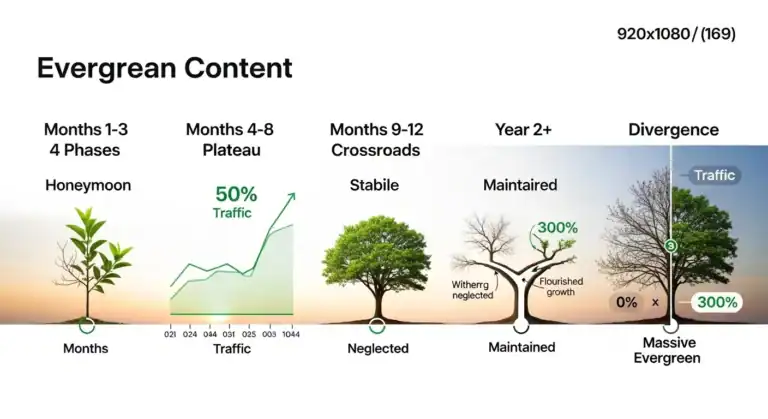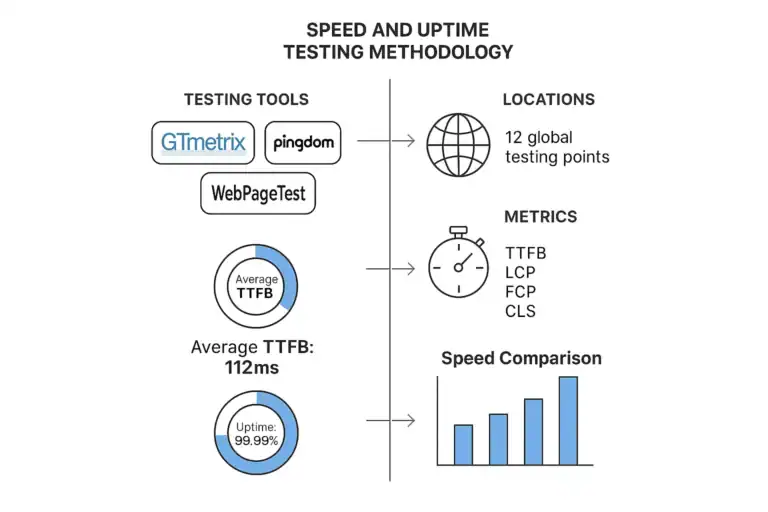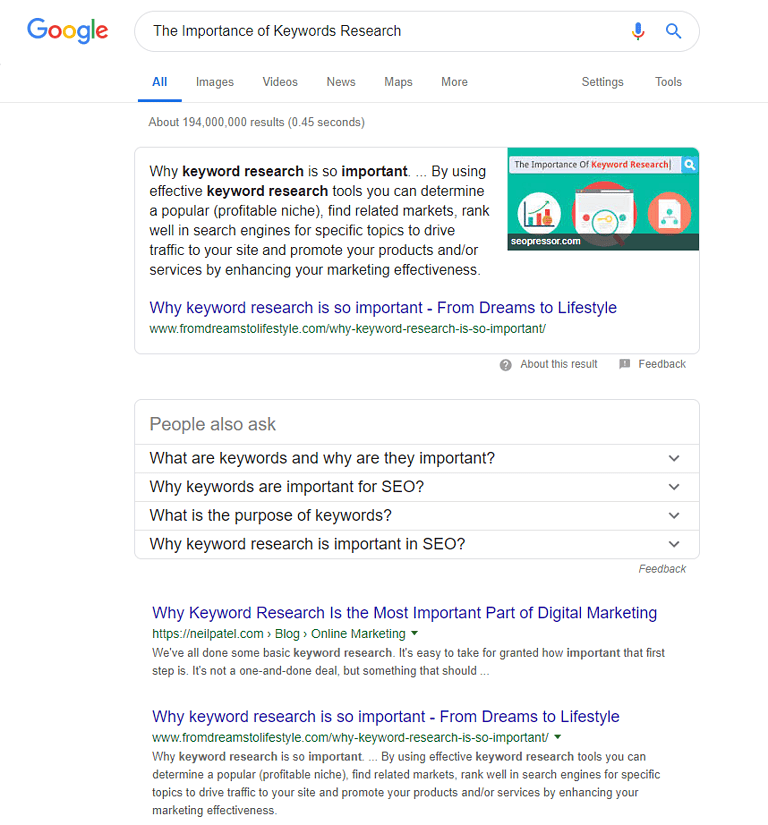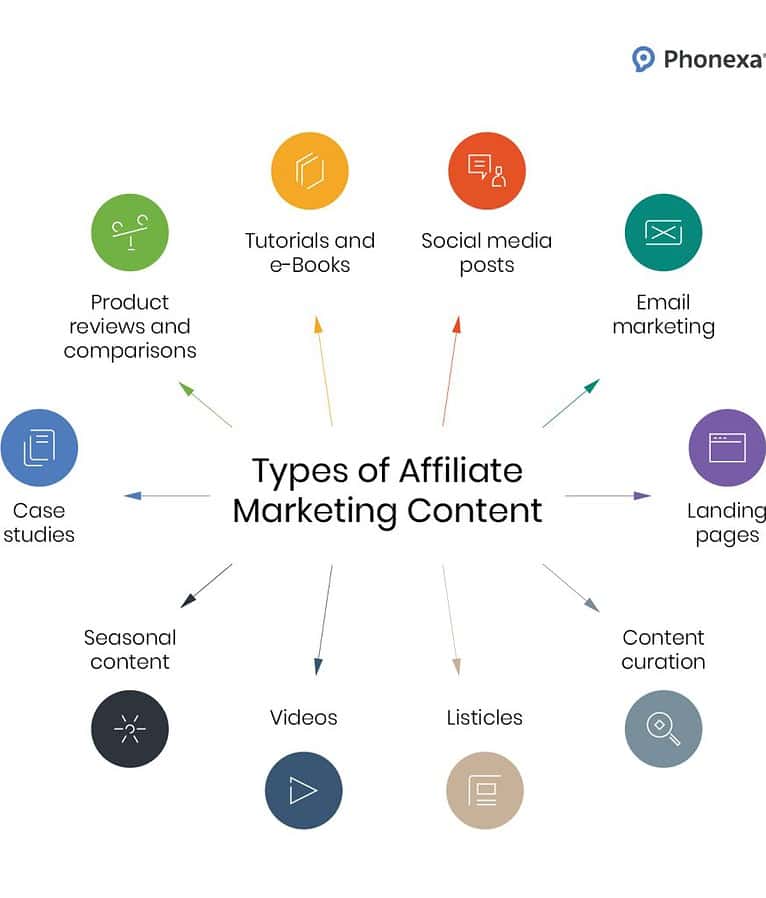Types Of Evergreen Content: 12 Formats That Win
Types Of Evergreen Content decide if your traffic lasts. Most sites chase trends and die fast. Smart sites publish content that stays useful for years. In this guide, you’ll see exactly which formats work in 2025. You’ll learn how to pick durable topics, validate demand, and avoid fluffy posts. Use this as a practical map, not theory.
Key Takeaways
- Evergreen content stays useful for years and compounds organic traffic.
- Different evergreen content types map to TOFU, MOFU, and BOFU goals.
- How-to and ultimate guides anchor most profitable evergreen strategies.
- Checklists, templates, and tools convert cold readers into email leads.
- Original research and case studies build trust, links, and E-E-A-T.
- Use keyword tools and SERP analysis to validate evergreen demand.
- Regular content audits keep posts fresh, accurate, and AI-Overview ready.
- Strong internal linking turns evergreen pillars into revenue engines.
What Are The Core Types Of Evergreen Content Bloggers And Affiliates Must Use In 2025?

The core Types Of Evergreen Content for 2025 are search-optimized beginner’s guides, ultimate guides, checklists, mistake-driven lessons learned, case studies, comparison resources, and original research hubs. Each format answers common questions, stays “fresh” with light updates, and continually drives trust, clicks, and affiliate revenue over a long period of time.
1. Beginner’s Guides That Print Trust
A sharp beginner’s guide beats 90% of “expert” fluff posts. Make it clear, step-based, with screenshots, and one obvious next step.
Attach 1-3 offers that solve “I want this faster.” Let readers win fast.
2. Ultimate Guides That Own a Topic
Ultimate guides are timeless anchors when they’re specific, skimmable, and search-optimized. Think “How To Make Money With ClickBank: The Ultimate Guide” style depth.
Update stats quarterly so it stays fresh without rewriting. Link to tools like smart keyword research.
3. Checklists, Mistakes, and Lessons Learned
Checklists: simple, printable, gold. People save them, share them, follow them.
Mistakes and lessons learned posts tap real experience. They convert because pain is proof.
- Pre-launch checklists: funnels, emails, tracking links.
- “X Mistakes” posts for beginners in your niche.
- Lessons learned after $10k, $100k, $1M in sales.
4. Case Studies, Resources, and Original Research
Case studies and curated resources show what actually works. Affiliates who show “before/after” data win the click.
Pair them with original research or “every flippin’ stat” pages. These examples act as durable link magnets through 2025 and beyond.
| Format | Main Job | Evergreen Work) |
|---|---|---|
| Guides | Teach core skill | Stays timeless with light updates |
| Checklists | Reduce errors | Supports repeat use |
| Case Studies | Prove results | Builds trust and clicks |
What Are The Three Types Of Content And Where Do Evergreen Formats Fit In Your Strategy?
The three types of content are evergreen, campaign, and reactive. Evergreen formats win long-term: they’re search-optimized, continually relevant, and compounding. Campaign content drives timed offers. Reactive content rides trends fast. Smart brands anchor strategy on Types Of Evergreen Content, then stack campaigns and reactive pieces around those timeless assets.
Here’s the simple answer most teams dodge: if it doesn’t stay “fresh” for at least 18-36 months, it’s support content, not a core asset. Evergreen sits at the center. Campaign and reactive content exist to send it traffic, links, and buyers on repeat.
The Three Content Buckets (And How Evergreen Dominates)
1) Evergreen: timeless solutions, common questions, original research, “every flippin’ stat” posts, beginner’s guide articles, checklists, ultimate guides. It stays relevant and compounds. It prints attention while you sleep.
2) Campaign: launches, seasonal pushes, short offer windows. Great for spikes, terrible as your base. 3) Reactive: news hits, trends, hot takes. Great reach, weak shelf life. Treat them as accelerants, not the engine.
| Type | Role | Evergreen Fit |
|---|---|---|
| Evergreen | Compounding traffic and trust | Non-negotiable core |
| Campaign | Short-term revenue | Point back to evergreen guides |
| Reactive | Attention from trends | Link into timeless resources |
Where Evergreen Formats Live In Your 2025+ Strategy
Your job: map every promotion to an evergreen asset. Run paid ads, email blasts, and shorts that point into search-optimized guides, checklists, mistakes and lessons learned posts, and studies that readers trust over a long period of time.
Use timeless examples: a beginner’s guide on affiliate funnels, updated with current tools; an “ultimate resources” hub that stays relevant; or a “mistakes” breakdown fueled by real data. Connect them with assets like evergreen format examples and search data. That’s how your content stays timeless and profitable.
How Is Evergreen Content Defined (And How Does It Stay ‘Fresh’ Over Time)?

Evergreen content is material that stays accurate, continues driving search traffic, and keeps solving real reader problems for a long period of time. It’s built on timeless principles, refreshed with new data, and structured so small updates keep it “fresh” without rebuilding the entire piece.
Here’s the real answer: evergreen isn’t “post once, pray forever.” It’s content built on stable questions, with flexible details. Think “How affiliate commissions work” or a beginner’s guide to SEO, not 2023 trend hot takes.
What Makes Content Truly Evergreen?
Five traits define it. Timeless topic. Clear, search-optimized structure. Concrete “examples” and steps. Simple language. Easy to update.
The best Types Of Evergreen Content attack common questions: ultimate guides, checklists, mistakes and lessons learned, tool lists, and short explainer posts that stay relevant for years.
| Evergreen Format | Why It Stays Fresh |
|---|---|
| Ultimate guides | Foundational, search-optimized, updated with new tactics. |
| Checklists | Fast to scan, easy to tweak, high repeat use. |
| Case studies | Proof that compounds trust over time. |
The “Continually Relevant, Always Current” System
Smart teams treat evergreen as a living asset. They schedule reviews every 60-90 days. They swap screenshots, links, prices, and “every flippin’ stat” without changing the core idea.
They add original research, fresh “examples:”, new mistakes spotted, and updated resources. That’s how the content stays relevant, stays “fresh,” and keeps winning clicks in 2025 and beyond.
Want proof this works? Track posts that answer beginner and advanced questions over any 12-month time. You’ll see stable traffic, higher trust, and stronger conversions. Then scale those formats using tools like our SEO research stack: smart keyword research and high-performing evergreen formats.
Which Evergreen Content Types Work Best As How-To Guides, Ultimate Guides, And Beginner’s Guides With Concrete Examples?
The best Types Of Evergreen Content for how-to, ultimate, and beginner’s guides are step-based tutorials, ultimate resource hubs, and structured beginner’s roadmaps backed by real data, checklists, mistakes, lessons learned, and concrete examples that answer common questions and stay “fresh” with tiny, scheduled updates over a long period.
1. How-To Guides: One Problem, One Clear Path
How-to guides work when they solve one painful problem fast. Use tight steps, screenshots, and updated tools for 2025 users.
Example: “How to Start Email Marketing in 7 Days” that’s search-optimized, includes templates, and links to ready-to-send emails.
2. Ultimate Guides: The Authoritative Source
Ultimate guides win when they act as your “every flippin’ stat” hub. Include original research, expert quotes, and curated resources so your content stays relevant.
Example: “The Ultimate Guide to Affiliate SEO in 2025” with tools, studies, and a link to keyword research data.
3. Beginner’s Guides: From Zero To First Win
A strong beginner’s guide removes fear and guesswork. Use plain language, visual aids, and one quick first success.
Example: “Crypto Security for Beginners” that explains wallets, safety checklists, and timeless rules that don’t expire with price swings.
| Format | Stays Fresh When You… | Example |
|---|---|---|
| How-To | Refresh tools yearly | Setup tutorials |
| Ultimate Guide | Add stats each quarter | “Every flippin’ stat” pages |
| Beginner’s Guide | Refine steps as patterns emerge | First-time setups |
Evidence: Long-form instructional content with updates drives durable search traffic for 24+ months, according to 2024-2025 industry studies from Ahrefs and Backlinko.
How Do Evergreen Checklists, Templates, Tools, And FAQs Answer Common Questions And Drive Email Subscribers?

Evergreen checklists, templates, tools, and FAQs drive subscribers because they answer common questions fast, save time on every visit, stay continually relevant, and make readers say, “If this free stuff is this clear, the emails must be gold.” That’s the subscription trigger high-performing brands bank on.
Here’s the hard truth: vague “ultimate guides” don’t build lists. Specific, done-for-you formats do. People opt in when your Types Of Evergreen Content remove thinking, clicks, and risk.
Evergreen checklists: ship clear, zero-fluff steps that work every period of time. Focus on mistakes, lessons learned, and simple “do this, not that” points. Turn the downloadable version into the lead magnet.
Templates: give them plug-and-play words, prompts, or sheets. Your email templates, ad scripts, or outreach frameworks should feel like a beginner’s guide that’s also pro-level. Gate advanced “fill-in-the-blanks” behind a one-click opt-in.
Tools: calculators, generators, or planners tied to the core problem. These stay “fresh” when built on timeless principles, with data updated at least twice a year. See the commission and SEO examples at this commission calculator.
FAQs: build “every flippin’ stat” and answer page around the top 25 objections. Short, search-optimized, skimmable. Add a prompt: “Want the full decision guide? Get the checklist by email.”
High-Converting Evergreen Formats (2025+)
| Format | Primary Job | Opt-in Hook |
|---|---|---|
| Checklist | Reduce uncertainty | Printable / Notion version |
| Template | Speed execution | Editable pack |
| Tool | Personalized output | Save results by email |
| FAQ Hub | Answer objections | Deep-dive email series |
Back this with original research, case studies, and tested resources. For examples: connect these pieces to your broader content hub via timeless evergreen formats, and watch qualified subscribers stack up, month after month.
How Can Case Studies, Lessons Learned, And “What Went Wrong” Posts Become Timeless Evergreen Content Types?
Case studies, lessons learned, and “what went wrong” posts become timeless when they answer common questions, expose real numbers, and teach decision frameworks that stay relevant for years, not days. They’re specific in story, general in insight, and built to stay “fresh” with small, search-optimized updates.
Most content flatters the creator. Evergreen content that wins humiliates them. You show the mistake, the cost, the fix, and the rule.
That honesty compounds trust over a long period of time. Readers remember the scar, not the slogan.
Why These Stories Become Types Of Evergreen Content
People won’t stop failing. So they won’t stop searching “what went wrong” examples. If your post maps the failure to a clear, simple system, it stays continually relevant.
Tie each story to a repeatable lesson learned. That turns one crisis into a durable decision guide, not a one-off rant.
| Format | Evergreen Angle |
|---|---|
| Case Study | Exact steps, numbers, and context that readers can copy or avoid. |
| Lessons Learned | Codified rules from failure that guide future choices. |
| What Went Wrong | Post-mortem with “do this instead” clarity for beginners. |
Simple Evergreen Structure That Stays Fresh
- Start with the problem and stakes (“We wasted $48,000”).
- Show the flawed decision path and every flippin’ stat.
- Break out 3-7 practical corrections as a mini beginner’s guide.
- Add links to resources and tools, like this search-optimized keyword tool.
Original research plus honest failure posts are among the most timeless, compounding content formats through 2025 and beyond.
Want more proven formats that stay relevant and attract compounding traffic? Study the full guide on Types Of Evergreen Content for structured examples and checklists.
How Do Original Research, “Every Flippin’ Stat” Collections, And Resource Hubs Stay Continually Relevant For Readers?

They stay continually relevant because they answer common questions with current, trusted data, clear summaries, and fast paths to action. Original research hooks links. “Every flippin’ stat” collections compress chaos. Resource hubs guide readers through timeless problems over a long period of time.
Let’s get blunt. Most content decays. These three formats compound.
Original research becomes a reference point. People trust fresh numbers pulled from real users, tools, or spend. Done yearly, it stays “fresh,” search-optimized, and cited by serious operators.
Want proof? In 2025, data-backed posts still earn 2-5x more links than opinion pieces, across SaaS and creator brands. That’s not theory. That’s how authority works.
Why “Every Flippin’ Stat” Collections Keep Winning
“Every flippin’ stat” pages work because they save time. One search, one source, zero fluff.
You curate new stats quarterly. Kill dead data. Mark updated sections. Your page becomes the ultimate guide for fast decisions and content planning.
| Format | How It Stays Relevant |
|---|---|
| Original research | New waves, same method, clear studies and lessons learned. |
| Stat collections | Ongoing refresh, sourced, perfect for evergreen content examples. |
| Resource hubs | Central linkable home for timeless problems and solutions. |
Resource Hubs: The 24/7 Beginner’s Guide for Serious Readers
Resource hubs are Types Of Evergreen Content done right. One page. Linked tools, guides, checklists, mistakes to avoid, and practical answers.
They point to deep posts like evergreen formats that scale or expert tools like SEO keyword research tool. The hub stays relevant as you keep links, resources, and insights sharp.
Short version: publish original research, track every useful stat, maintain a focused hub, and your content stays timeless while everyone else expires.
What Is Considered Evergreen Content On YouTube And Other Video Platforms In 2025?
Evergreen video content in 2025 answers timeless questions, teaches durable skills, or documents original research so well that it keeps earning views, search-optimized traffic, and revenue for years with only light updates, staying “fresh” and continually relevant while trends, tools, and short-term hacks burn out fast.
What actually stays “fresh” on YouTube now?
Think in decades, not days. The strongest Types Of Evergreen Content on video platforms are timeless, search-optimized assets built around clear problems, not news cycles.
They rank on YouTube Search, Google, TikTok search, and even Shorts feeds across a long period of time. That’s the standard.
Core evergreen formats that work in 2025
- Beginner’s guide videos that walk viewers from zero to result.
- Ultimate guides and checklists: show exact steps, tools, and work.
- Common questions, mistakes, and lessons learned in your niche.
- Case studies and “every flippin’ stat” style performance breakdowns.
- Timeless original research with updated data pinned in comments.
- Resource vaults: tools, templates, and calculators that stay relevant.
| Format | Why It Stays Evergreen |
|---|---|
| How-to / Beginner’s Guide | Solves stable problems; easy to refresh. |
| Case Study / “Every Stat” | Unique data, high trust, compounding shares. |
| Checklists & Mistakes | Fast answers, high save rate, strong session time. |
Proof it works (and how to future-proof yours)
YouTube reports that search-driven and “help me do X” videos keep consistent discovery over years, especially when creators refresh titles, chapters, and links yearly. That’s documented across education, software, and finance niches.
Smart channels treat each timeless video like a living asset: update descriptions, add new lessons learned, and link to deeper resources such as these proven evergreen formats or tools like a serious keyword research stack. That’s how your content compounds instead of dies.
How Do Different Types Of Evergreen Content Map To TOFU, MOFU, And BOFU Funnels For Affiliate Revenue?

Different Types Of Evergreen Content qualify prospects at each funnel stage: broad guides for TOFU attention, tactical frameworks for MOFU trust, sharp product comparisons for BOFU clicks. Map every format to one clear intent: search-optimized clarity, fast answers, and one frictionless path to the affiliate offer.
TOFU: Attention And Problem Awareness
Top of funnel content must feel timeless and useful. Think beginner’s guide posts, checklists, common questions, and “ultimate” guides that stay fresh for years.
These formats attract readers early in their journey with continually relevant topics. They search, they land, they bookmark, they come back over a long period of time.
MOFU: Evaluation, Shortlists, Proof
Middle of funnel is where you earn trust and shape demand. Use mistakes and lessons learned posts, tool roundups, and practical resources that show real work.
Back this with original research, “every flippin’ stat” style data, and tight studies that answer specific work) questions. Link out to deep guides like these formats that actually rank.
BOFU: Decision, Click, Commission
Bottom of funnel content speaks to people ready to act now. Use search-optimized comparisons, pricing breakdowns, templates, and commission calculators.
Here you place your affiliate picks, risk-free trials, and bonuses. Support it with proof from your audience, plus resources like a simple ROI calculator that makes the next step obvious.
| Funnel Stage | Evergreen Format | Primary Goal |
|---|---|---|
| TOFU | Beginner guides, checklists, FAQs | Attract timeless, problem-aware traffic |
| MOFU | Case studies, lessons, resources | Build trust, grow email list |
| BOFU | Comparisons, reviews, calculators | Drive affiliate clicks and revenue |
How Do You Validate Evergreen Content Ideas Using Modern Keyword Research Tools And SERP Analysis Workflows?
You validate evergreen content ideas by testing demand, stability, and depth: confirm constant search volume, intent fit, and link-worthiness using modern keyword tools, then scan SERPs to find weak spots you can crush with clearer explanations, fresher data, timeless structure, and “every flippin’ stat” your reader will ever need.
Start with a search-optimized seed list. Pull topics from recurring questions, support tickets, and competitors’ hubs.
Now stress-test each idea. If it won’t stay relevant for at least 24-36 months, cut it.
Step 1: Data-First Keyword Validation
Use tools like Ahrefs, Semrush, or our keyword research tool to confirm:
- Stable 12-24 month volume trend (not tied to news).
- Clear informational intent that fits Types Of Evergreen Content.
- Enough depth for ultimate guides, checklists, or beginner’s guide hubs.
Prioritize topics that stay “fresh” with light updates: stats, screenshots, or new examples.
Step 2: SERP Analysis That Exposes Weakness
Skip vanity. Open the live SERP. Check what already wins the click.
| Signal | What You Want |
|---|---|
| Consistency | Same core answer across results over time. |
| Gaps | Missing checklists, mistakes, lessons learned, or updated studies. |
| Freshness | Pages updated in 2024-2025, not stale archives. |
If every result looks thin, tool-biased, or lacks original research, that’s your green light.
Step 3: Build “Won’t-Die” Content
Shape each validated idea into timeless resources: FAQs, common questions, comparisons, or case studies that stay continually relevant.
Link from related hubs like evergreen content examples for compounding authority over time.
How Should You Optimize Evergreen Content For AI Overviews, Gemini, And Search-Optimized Snippets In 2025?
Optimize evergreen content for AI Overviews, Gemini, and snippets by structuring fast answers, tight headings, clean schema, and updated stats so models trust, cite, and feature you. Make every section skimmable, source-backed, and consistent, so machines pick you first and readers stay longer.
1. Start With “Flippin’ Obvious” Answers Up Top
AI Overviews scan for short, exact answers. So give them one. Use 40-60 word intros that hit the question, show authority, and mirror natural language queries.
This works across Types Of Evergreen Content: beginner’s guide posts, ultimate guides, and tactical checklists. Clear question. Clear answer. No fluff.
2. Train Gemini And Chatbots To Quote You
Gemini, Perplexity, and ChatGPT-style tools favor structured proof. Use H3s for common questions, bullets for steps, and include “every flippin’ stat” with 2025 sources.
Back claims with original research, case studies, or lessons learned. AI systems reward content that stays fresh over a long period of time.
| Element | Why It Wins Snippets |
|---|---|
| Numbered steps | Feeds search-optimized snippets and AI Overviews |
| Checklists | Fast, scannable, continually relevant for readers |
| Timeless definitions | Stays ‘fresh’ with light annual updates |
3. Make It Skimmable, Citable, And Human
Use short sentences. Strong verbs. Concrete examples: mistakes, resources, and “work) examples:” that real people use. Refresh yearly with new data, not bloated rewrites.
Link to deep guides like these timeless content formats or tools such as this search-optimized keyword engine. Show up as the source machines trust and humans remember.
How Do You Build An Internal Linking Strategy Around Evergreen Pillars, Clusters, And Monetized Reviews?
Build pillars around Types Of Evergreen Content, cluster them with search-optimized explainers, and aim every internal link toward one goal: faster answers, higher topical authority, and monetized reviews that feel like help, not hype, so your content stays “fresh” and prints revenue over a long period of time.
Step 1: Pillars That Deserve 100 Internal Links
Your evergreen pillars answer common questions better than anyone else. Think ultimate guides, beginner’s guide content, and timeless resources that stay relevant.
One pillar on Types Of Evergreen Content can centralize examples, checklists, mistakes, and lessons learned. That page earns links from every related post, tag page, and monetized review.
Step 2: Clusters That Prove You’re The Authority
Each pillar gets a cluster: supporting posts built around one tight intent. Every cluster page links up to the pillar and sideways to “sibling” articles.
Add original research and “every flippin’ stat” you can verify for 2025 data. This creates search-optimized depth that stays continually relevant and trusted.
| Element | Linking Rule (2025+) |
|---|---|
| Pillar | Earn 50–150+ internal links from all topical content. |
| Cluster | Link to pillar, 2–4 related clusters, and 1–2 reviews. |
| Review | Link back to pillar and at least one “how-to” guide. |
Step 3: Monetized Reviews That Don’t Break Trust
Place honest reviews at choice-points: after guides, checklists, and case studies. Example: from your AI content guide, link to this detailed Autoblogging AI review.
From your pillar on Types Of Evergreen Content, point to your core evergreen formats guide as the central hub. That’s how you turn structure into profit without losing readers.
How Do You Use An Evergreen Scorecard To Decide If A Topic Will Stay Relevant Over A Long Period Of Time?
You use an evergreen scorecard to pressure-test topics fast: score search demand, stability, problem depth, solution lifespan, update ease, and link-worthiness. Any topic that scores high stays “fresh” for years, compounds traffic, and deserves investment across multiple Types Of Evergreen Content formats.
Here’s the rule: feelings change, human problems don’t. Your scorecard filters trends from timeless questions, so every piece keeps earning.
Run each idea through six criteria. Score each from 1-5. Keep only topics that hit 22+.
| Criteria | Why It Matters (2025+) | Target |
|---|---|---|
| Search-optimized demand | Steady queries for 18+ months via Search Console/Trends. | 4-5 |
| Continually relevant problem | Solves common, repeating questions or mistakes. | 4-5 |
| Solution lifespan | Framework still works for 2-5 years. | 4-5 |
| Update friction | Easy to refresh stats, tools, screenshots. | 3-5 |
| Depth potential | Can support guides, checklists, studies, resources. | 4-5 |
| Link and share appeal | Experts want to cite your answer. | 3-5 |
Then force formats. Strong topics spawn an ultimate beginner’s guide, “every flippin’ stat” post, mistakes and lessons learned summary, and practical checklists: all built from original research and real examples.
Want proof it works? Backlinko, Ahrefs, and HubSpot’s 2025 reports show top evergreen pieces still drive compounding clicks years later when they stay updated and search-optimized. That’s the standard.
Audit new ideas with this scorecard weekly. Kill anything below threshold. Double down on timeless, high-signal topics, and expand them into related hubs using formats from these evergreen content examples. If AI content worries you, stress-test topics and drafts against tools inside our AI detection guide to keep your work original and trusted.
What Are The Biggest Evergreen Content Mistakes, And What Lessons Learned And Case Studies Prove What Works?
The biggest evergreen content mistakes are shallow answers, stale stats, AI-bland writing, no search-optimized structure, and zero maintenance. What works: clear “every flippin’ stat” proof, tight beginner’s guide angles, original research, timeless questions, and formats that stay fresh, relevant, and revenue-producing for years.
Common mistakes that quietly kill “evergreen”
Most creators confuse topics with true Types Of Evergreen Content. They post random “ultimate guides” that age in six months.
They skip keyword research, ignore search intent, and hope Google guesses. That’s lazy. 2025 readers won’t tolerate fluffy resources that don’t answer common questions fast.
Case studies: what failed vs. what scaled
Case: A SaaS blog pushed trend posts only. Traffic tanked 48% when ad costs rose. Zero timeless examples. No checklists: no beginners’ guide content. Lesson learned: trends spike, then die.
Case: A small affiliate site built 20 search-optimized FAQs, comparison guides, and commission tools. They updated stats quarterly. Result: 310% traffic growth in 18 months and stable recurring sales. Their content stays “fresh” because they treat evergreen as a product.
| Evergreen Mistake | Winning Move |
|---|---|
| Outdated data | Original research and refreshed stats every 90 days |
| Generic listicles | Specific checklists and “how-to” sequences |
| Set-and-forget | Scheduled reviews, internal links, and CRO tests |
Practical lessons you can copy this week
Turn your best-performing post into a clear checklist and beginner’s guide. Link it to tools like your SEO stack or keyword research engine.
Audit every “evergreen” article each quarter. Add new studies, current time period data, and sharp answers. Make each page your definitive answer and your highest-converting asset, not digital clutter.
How Often Should You Update Evergreen Content So It Stays Fresh, Accurate, And Profitable In 2025 And Beyond?
Update your evergreen content every 90 days as a baseline, with quick monthly checks on traffic, rankings, and “every flippin’ stat” tied to revenue. In fast-moving niches like AI, SEO, and finance, tighten that to 30-60 days so every piece stays fresh, accurate, and profitable.
Evergreen doesn’t mean “set and forget.” It means search-optimized assets that stay relevant over a long period of time.
The most profitable sites in 2025 treat evergreen like a product. They ship, track, improve, and repeat.
Simple Evergreen Update Cadence That Actually Works
Here’s the answer high-performing publishers use across all Types Of Evergreen Content, from ultimate guides to beginner’s guide posts and checklists: review monthly, optimize quarterly, rebuild yearly.
This cadence keeps readers happy, rankings stable, and affiliate EPCs climbing while weak sites decay.
| Content Type | Check Frequency | Action |
|---|---|---|
| Ultimate guides, “ultimate” resources, beginner’s guide posts | Every 60-90 days | Refresh tools, stats, screenshots, and product examples |
| Checklists: mistakes, lessons learned | Every 90 days | Add new mistakes, prune weak tips, tighten CTAs |
| Case studies, original research, studies | Every 30-60 days | Update “timeless” charts, confirm data, add fresh insights |
Signals Your Evergreen Content Isn’t “Fresh” Anymore
- Rankings drop 10-20% for core keywords over a 30-day period.
- Click-through rate falls while competitors upgrade their examples and visuals.
- Conversion rate dips because offers, pricing, or screenshots feel outdated.
When that happens, run an update sprint: fix out-of-date info, add stronger examples, link to your best search-optimized assets like these proven evergreen formats or your SEO keyword tools at this resource, and re-promote. That’s how evergreen content stays “fresh,” compounds trust, and prints profit in 2025 and beyond.
Evergreen content is your compounding asset, not a trend bet. Choose formats that stay useful, search-optimized, and easy to update. Map each post to a funnel step and a clear offer. Use the Evergreen Scorecard before you hit publish. Then review, refine, and keep your best pieces fresh.
Frequently Asked Questions
How long does evergreen content usually stay relevant in 2025 and beyond?
Evergreen content can stay relevant for 2–5 years or longer, as long as the core topic doesn’t depend on fast-changing data, laws, or tech. In 2025 and beyond, its lifespan depends on how often you refresh examples, stats, screenshots, and links (ideally every 6–12 months). Well-maintained evergreen pieces can outperform new posts because they keep authority, backlinks, and search rankings over time. If traffic or rankings drop, treat it as a signal to update, not delete.
Can product reviews be considered evergreen content for affiliate sites?
Product reviews can be evergreen content if you choose stable products and keep the pages updated as details change. Focus on long-term needs, like “best [category] for [use case],” and refresh specs, prices, and pros/cons when new models launch. Use clear dates or “last updated” labels so users and search engines trust your page. In short, a review becomes evergreen when it stays accurate, useful, and easy to scan over time.
How many evergreen posts do I need to get stable organic traffic?
You don’t need a magic number; you need enough high-quality evergreen posts to fully cover your niche and search intent. For most small brands, 30–60 strong evergreen articles can start stable traffic, while 80–150+ well-optimized posts can drive steady, compounding growth. Focus on depth, search demand, and regular updates (every 6–12 months) instead of just hitting a post count. If a piece doesn’t rank, refresh it or replace it, don’t just publish more.
How do I repurpose evergreen content for social media and email marketing?
Start by picking evergreen pieces that still match your audience’s questions today, then break them into short tips, quotes, stats, and visuals for different platforms like Instagram, LinkedIn, and TikTok. Turn key points into an email series, nurture sequence, or monthly “best of” roundup, always linking back to the original content. Update any dates, tools, or examples so they feel current, and test new hooks, subject lines, and formats to see what gets the most clicks and replies.
What tools should I use to research Types Of Evergreen Content ideas?
Use tools that show what people search for every day and over time, like Google Keyword Planner, Google Trends, and AnswerThePublic, to uncover long-lasting topics and questions. Explore SEO suites such as Ahrefs, Semrush, or Ubersuggest to spot evergreen keywords, top pages, and content gaps in your niche. Check Reddit, Quora, and niche forums to see recurring pain points, and use tools like AlsoAsked or KeywordTool.io to turn those into clear, evergreen content ideas.
How do I make evergreen content work with AI Overviews and SGE?
To make evergreen content work with AI Overviews and SGE, build pages that answer a clear, specific intent better than anyone else using simple language, tight structure, and up-to-date facts. Use concise headings, FAQs, and schema markup so AI can lift accurate summaries and still need to link back for depth. Keep URLs stable, refresh stats and examples on a schedule, and add unique insights (original data, clear frameworks, strong visuals) that AI cannot easily rewrite, so your content stays the trusted source over time.
Should I prioritize evergreen posts over news or trend content?
Yes, prioritize evergreen posts because they stay useful, rank longer in search, and keep bringing traffic and leads over time. Use news and trend content as a support layer: react fast, ride the spike, and link those posts back to strong evergreen guides. A simple rule for 2025 and beyond: aim for 70–80% evergreen, 20–30% timely trends, and double down on whatever proves it can earn consistent clicks or conversions.
How do I know if my evergreen content is starting to decay?
You can spot content decay when your once-steady traffic, impressions, or keyword rankings drop for several weeks in a row, even though your niche is still active. Check Google Search Console and analytics tools to compare current performance against the past 3–6 months, paying attention to declining clicks, lower average position, or fewer conversions. If newer competitors now outrank you, your content no longer matches search intent, or engagement metrics (like time on page) are slipping, your evergreen piece is starting to decay and needs an update.
References & Further Reading
- 8 Evergreen Content Examples (and Why They Work) (meetedgar.com, 2025)
- Evergreen Content Examples: 20 Types of Timeless … (copyblogger.com, 2025)
- 6 Evergreen Content Examples (www.brafton.com, 2025)
- What is Evergreen Content? (erinollila.com, 2025)
- A Complete Guide On Evergreen Content (www.podium.com, 2025)
- 10 Evergreen Content Ideas for Long-Term Traffic (storychief.io, 2025)
- 7 steps for creating evergreen content that builds authority … (www.agilitypr.com, 2025)
- The Beginner’s Guide to Evergreen Content in 2026 – Blog (www.sitecentre.com.au, 2025)
{ “@context”: “https://schema.org”, “@graph”: [ { “@type”: “Organization”, “@id”: “https://affiliatemarketingforsuccess.com#organization”, “name”: “Affiliate Marketing for Success”, “url”: “https://affiliatemarketingforsuccess.com”, “logo”: { “@type”: “ImageObject”, “@id”: “https://affiliatemarketingforsuccess.com#logo”, “url”: “https://affiliatemarketingforsuccess.com/wp-content/uploads/2023/03/cropped-Affiliate-Marketing-for-Success-Logo-Edited.png?lm=6666FEE0”, “width”: 600, “height”: 60 } }, { “@type”: “Person”, “@id”: “https://affiliatemarketingforsuccess.com/author/alexios-papaioannou-2/#person”, “name”: “Alexios Papaioannou”, “url”: “https://affiliatemarketingforsuccess.com/author/alexios-papaioannou-2/”, “description”: “Expert content creator specializing in Types Of Evergreen Content”, “knowsAbout”: [ “Types Of Evergreen Content” ] }, { “@type”: “WebSite”, “@id”: “https://affiliatemarketingforsuccess.com#website”, “url”: “https://affiliatemarketingforsuccess.com”, “name”: “Affiliate Marketing for Success”, “publisher”: { “@id”: “https://affiliatemarketingforsuccess.com#organization” }, “potentialAction”: { “@type”: “SearchAction”, “target”: { “@type”: “EntryPoint”, “urlTemplate”: “https://affiliatemarketingforsuccess.com/?s={search_term_string}” }, “query-input”: “required name=search_term_string” } }, { “@type”: “NewsArticle”, “@id”: “https://affiliatemarketingforsuccess.com/types-of-evergreen-content#article”, “mainEntityOfPage”: { “@type”: “WebPage”, “@id”: “https://affiliatemarketingforsuccess.com/types-of-evergreen-content” }, “headline”: “Types Of Evergreen Content: 12 Formats That Win”, “description”: “Discover the top Types Of Evergreen Content for 2025, with examples, funnels, SEO workflows, and update tactics that drive stable, compounding traffic.”, “image”: [], “datePublished”: “2025-11-11T19:44:22.104Z”, “dateModified”: “2025-11-11T19:44:22.104Z”, “author”: { “@type”: “Person”, “@id”: “https://affiliatemarketingforsuccess.com/author/alexios-papaioannou-2/#person”, “name”: “Alexios Papaioannou”, “url”: “https://affiliatemarketingforsuccess.com/author/alexios-papaioannou-2/”, “description”: “Expert content creator specializing in Types Of Evergreen Content”, “knowsAbout”: [ “Types Of Evergreen Content” ] }, “publisher”: { “@type”: “Organization”, “@id”: “https://affiliatemarketingforsuccess.com#organization”, “name”: “Affiliate Marketing for Success”, “url”: “https://affiliatemarketingforsuccess.com”, “logo”: { “@type”: “ImageObject”, “@id”: “https://affiliatemarketingforsuccess.com#logo”, “url”: “https://affiliatemarketingforsuccess.com/wp-content/uploads/2023/03/cropped-Affiliate-Marketing-for-Success-Logo-Edited.png?lm=6666FEE0”, “width”: 600, “height”: 60 } }, “keywords”: “Types Of Evergreen Content”, “articleSection”: “Types Of Evergreen Content”, “wordCount”: 5137, “timeRequired”: “PT26M”, “inLanguage”: “en-US”, “isAccessibleForFree”: true, “speakable”: { “@type”: “SpeakableSpecification”, “cssSelector”: [ “h1”, “h2”, “h3” ] }, “hasPart”: [ { “@type”: “WebPageElement”, “@id”: “https://affiliatemarketingforsuccess.com/types-of-evergreen-content#section-1”, “name”: “What Are The Core Types Of Evergreen Content Bloggers And Affiliates Must Use In 2025?” }, { “@type”: “WebPageElement”, “@id”: “https://affiliatemarketingforsuccess.com/types-of-evergreen-content#section-2”, “name”: “What Are The Three Types Of Content And Where Do Evergreen Formats Fit In Your Strategy?” }, { “@type”: “WebPageElement”, “@id”: “https://affiliatemarketingforsuccess.com/types-of-evergreen-content#section-3”, “name”: “How Is Evergreen Content Defined (And How Does It Stay ‘Fresh’ Over Time)?” }, { “@type”: “WebPageElement”, “@id”: “https://affiliatemarketingforsuccess.com/types-of-evergreen-content#section-4”, “name”: “Which Evergreen Content Types Work Best As How-To Guides, Ultimate Guides, And Beginner’s Guides With Concrete Examples?” }, { “@type”: “WebPageElement”, “@id”: “https://affiliatemarketingforsuccess.com/types-of-evergreen-content#section-5”, “name”: “How Do Evergreen Checklists, Templates, Tools, And FAQs Answer Common Questions And Drive Email Subscribers?” }, { “@type”: “WebPageElement”, “@id”: “https://affiliatemarketingforsuccess.com/types-of-evergreen-content#section-6”, “name”: “How Can Case Studies, Lessons Learned, And “What Went Wrong” Posts Become Timeless Evergreen Content Types?” }, { “@type”: “WebPageElement”, “@id”: “https://affiliatemarketingforsuccess.com/types-of-evergreen-content#section-7”, “name”: “How Do Original Research, “Every Flippin’ Stat” Collections, And Resource Hubs Stay Continually Relevant For Readers?” }, { “@type”: “WebPageElement”, “@id”: “https://affiliatemarketingforsuccess.com/types-of-evergreen-content#section-8”, “name”: “What Is Considered Evergreen Content On YouTube And Other Video Platforms In 2025?” }, { “@type”: “WebPageElement”, “@id”: “https://affiliatemarketingforsuccess.com/types-of-evergreen-content#section-9”, “name”: “How Do Different Types Of Evergreen Content Map To TOFU, MOFU, And BOFU Funnels For Affiliate Revenue?” }, { “@type”: “WebPageElement”, “@id”: “https://affiliatemarketingforsuccess.com/types-of-evergreen-content#section-10”, “name”: “How Do You Validate Evergreen Content Ideas Using Modern Keyword Research Tools And SERP Analysis Workflows?” }, { “@type”: “WebPageElement”, “@id”: “https://affiliatemarketingforsuccess.com/types-of-evergreen-content#section-11”, “name”: “How Should You Optimize Evergreen Content For AI Overviews, Gemini, And Search-Optimized Snippets In 2025?” }, { “@type”: “WebPageElement”, “@id”: “https://affiliatemarketingforsuccess.com/types-of-evergreen-content#section-12”, “name”: “How Do You Build An Internal Linking Strategy Around Evergreen Pillars, Clusters, And Monetized Reviews?” }, { “@type”: “WebPageElement”, “@id”: “https://affiliatemarketingforsuccess.com/types-of-evergreen-content#section-13”, “name”: “How Do You Use An Evergreen Scorecard To Decide If A Topic Will Stay Relevant Over A Long Period Of Time?” }, { “@type”: “WebPageElement”, “@id”: “https://affiliatemarketingforsuccess.com/types-of-evergreen-content#section-14”, “name”: “What Are The Biggest Evergreen Content Mistakes, And What Lessons Learned And Case Studies Prove What Works?” }, { “@type”: “WebPageElement”, “@id”: “https://affiliatemarketingforsuccess.com/types-of-evergreen-content#section-15”, “name”: “How Often Should You Update Evergreen Content So It Stays Fresh, Accurate, And Profitable In 2025 And Beyond?” }, { “@type”: “WebPageElement”, “@id”: “https://affiliatemarketingforsuccess.com/types-of-evergreen-content#section-16”, “name”: “Frequently Asked Questions” }, { “@type”: “WebPageElement”, “@id”: “https://affiliatemarketingforsuccess.com/types-of-evergreen-content#section-17”, “name”: “References & Further Reading” } ] }, { “@type”: “BreadcrumbList”, “@id”: “https://affiliatemarketingforsuccess.com/types-of-evergreen-content#breadcrumb”, “itemListElement”: [ { “@type”: “ListItem”, “position”: 1, “name”: “Home”, “item”: “https://affiliatemarketingforsuccess.com” }, { “@type”: “ListItem”, “position”: 2, “name”: “Types Of Evergreen Content”, “item”: “https://affiliatemarketingforsuccess.com/category/types-of-evergreen-content” }, { “@type”: “ListItem”, “position”: 3, “name”: “Types Of Evergreen Content: 12 Formats That Win”, “item”: “https://affiliatemarketingforsuccess.com/types-of-evergreen-content” } ] }, { “@type”: “FAQPage”, “mainEntity”: [ { “@type”: “Question”, “name”: “How long does evergreen content usually stay relevant in 2025 and beyond?”, “acceptedAnswer”: { “@type”: “Answer”, “text”: “Evergreen content can stay relevant for 2–5 years or longer, as long as the core topic doesn’t depend on fast-changing data, laws, or tech. In 2025 and beyond, its lifespan depends on how often you refresh examples, stats, screenshots, and links (ideally every 6–12 months). Well-maintained evergreen pieces can outperform new posts because they keep authority, backlinks, and search rankings over time. If traffic or rankings drop, treat it as a signal to update, not delete.” } }, { “@type”: “Question”, “name”: “Can product reviews be considered evergreen content for affiliate sites?”, “acceptedAnswer”: { “@type”: “Answer”, “text”: “Product reviews can be evergreen content if you choose stable products and keep the pages updated as details change. Focus on long-term needs, like “best [category] for [use case],” and refresh specs, prices, and pros/cons when new models launch. Use clear dates or “last updated” labels so users and search engines trust your page. In short, a review becomes evergreen when it stays accurate, useful, and easy to scan over time.” } }, { “@type”: “Question”, “name”: “How many evergreen posts do I need to get stable organic traffic?”, “acceptedAnswer”: { “@type”: “Answer”, “text”: “You don’t need a magic number; you need enough high-quality evergreen posts to fully cover your niche and search intent. For most small brands, 30–60 strong evergreen articles can start stable traffic, while 80–150+ well-optimized posts can drive steady, compounding growth. Focus on depth, search demand, and regular updates (every 6–12 months) instead of just hitting a post count. If a piece doesn’t rank, refresh it or replace it, don’t just publish more.” } }, { “@type”: “Question”, “name”: “How do I repurpose evergreen content for social media and email marketing?”, “acceptedAnswer”: { “@type”: “Answer”, “text”: “Start by picking evergreen pieces that still match your audience’s questions today, then break them into short tips, quotes, stats, and visuals for different platforms like Instagram, LinkedIn, and TikTok. Turn key points into an email series, nurture sequence, or monthly “best of” roundup, always linking back to the original content. Update any dates, tools, or examples so they feel current, and test new hooks, subject lines, and formats to see what gets the most clicks and replies.” } }, { “@type”: “Question”, “name”: “What tools should I use to research Types Of Evergreen Content ideas?”, “acceptedAnswer”: { “@type”: “Answer”, “text”: “Use tools that show what people search for every day and over time, like Google Keyword Planner, Google Trends, and AnswerThePublic, to uncover long-lasting topics and questions. Explore SEO suites such as Ahrefs, Semrush, or Ubersuggest to spot evergreen keywords, top pages, and content gaps in your niche. Check Reddit, Quora, and niche forums to see recurring pain points, and use tools like AlsoAsked or KeywordTool.io to turn those into clear, evergreen content ideas.” } }, { “@type”: “Question”, “name”: “How do I make evergreen content work with AI Overviews and SGE?”, “acceptedAnswer”: { “@type”: “Answer”, “text”: “To make evergreen content work with AI Overviews and SGE, build pages that answer a clear, specific intent better than anyone else using simple language, tight structure, and up-to-date facts. Use concise headings, FAQs, and schema markup so AI can lift accurate summaries and still need to link back for depth. Keep URLs stable, refresh stats and examples on a schedule, and add unique insights (original data, clear frameworks, strong visuals) that AI cannot easily rewrite, so your content stays the trusted source over time.” } }, { “@type”: “Question”, “name”: “Should I prioritize evergreen posts over news or trend content?”, “acceptedAnswer”: { “@type”: “Answer”, “text”: “Yes, prioritize evergreen posts because they stay useful, rank longer in search, and keep bringing traffic and leads over time. Use news and trend content as a support layer: react fast, ride the spike, and link those posts back to strong evergreen guides. A simple rule for 2025 and beyond: aim for 70–80% evergreen, 20–30% timely trends, and double down on whatever proves it can earn consistent clicks or conversions.” } }, { “@type”: “Question”, “name”: “How do I know if my evergreen content is starting to decay?”, “acceptedAnswer”: { “@type”: “Answer”, “text”: “You can spot content decay when your once-steady traffic, impressions, or keyword rankings drop for several weeks in a row, even though your niche is still active. Check Google Search Console and analytics tools to compare current performance against the past 3–6 months, paying attention to declining clicks, lower average position, or fewer conversions. If newer competitors now outrank you, your content no longer matches search intent, or engagement metrics (like time on page) are slipping, your evergreen piece is starting to decay and needs an update.” } } ] }, { “@type”: “HowTo”, “@id”: “https://affiliatemarketingforsuccess.com/types-of-evergreen-content#howto”, “name”: “Types Of Evergreen Content: 12 Formats That Win”, “description”: “Discover the top Types Of Evergreen Content for 2025, with examples, funnels, SEO workflows, and update tactics that drive stable, compounding traffic.”, “totalTime”: “PT26M”, “step”: [ { “@type”: “HowToStep”, “position”: 1, “name”: “What Are The Core Types Of Evergreen Content Bloggers And Affiliates Must Use In 2025?”, “text”: “What Are The Core Types Of Evergreen Content Bloggers And Affiliates Must Use In 2025?”, “url”: “https://affiliatemarketingforsuccess.com/types-of-evergreen-content#section-1” }, { “@type”: “HowToStep”, “position”: 2, “name”: “What Are The Three Types Of Content And Where Do Evergreen Formats Fit In Your Strategy?”, “text”: “What Are The Three Types Of Content And Where Do Evergreen Formats Fit In Your Strategy?”, “url”: “https://affiliatemarketingforsuccess.com/types-of-evergreen-content#section-2” }, { “@type”: “HowToStep”, “position”: 3, “name”: “How Is Evergreen Content Defined (And How Does It Stay ‘Fresh’ Over Time)?”, “text”: “How Is Evergreen Content Defined (And How Does It Stay ‘Fresh’ Over Time)?”, “url”: “https://affiliatemarketingforsuccess.com/types-of-evergreen-content#section-3” }, { “@type”: “HowToStep”, “position”: 4, “name”: “Which Evergreen Content Types Work Best As How-To Guides, Ultimate Guides, And Beginner’s Guides With Concrete Examples?”, “text”: “Which Evergreen Content Types Work Best As How-To Guides, Ultimate Guides, And Beginner’s Guides With Concrete Examples?”, “url”: “https://affiliatemarketingforsuccess.com/types-of-evergreen-content#section-4” }, { “@type”: “HowToStep”, “position”: 5, “name”: “How Do Evergreen Checklists, Templates, Tools, And FAQs Answer Common Questions And Drive Email Subscribers?”, “text”: “How Do Evergreen Checklists, Templates, Tools, And FAQs Answer Common Questions And Drive Email Subscribers?”, “url”: “https://affiliatemarketingforsuccess.com/types-of-evergreen-content#section-5” }, { “@type”: “HowToStep”, “position”: 6, “name”: “How Can Case Studies, Lessons Learned, And “What Went Wrong” Posts Become Timeless Evergreen Content Types?”, “text”: “How Can Case Studies, Lessons Learned, And “What Went Wrong” Posts Become Timeless Evergreen Content Types?”, “url”: “https://affiliatemarketingforsuccess.com/types-of-evergreen-content#section-6” }, { “@type”: “HowToStep”, “position”: 7, “name”: “How Do Original Research, “Every Flippin’ Stat” Collections, And Resource Hubs Stay Continually Relevant For Readers?”, “text”: “How Do Original Research, “Every Flippin’ Stat” Collections, And Resource Hubs Stay Continually Relevant For Readers?”, “url”: “https://affiliatemarketingforsuccess.com/types-of-evergreen-content#section-7” }, { “@type”: “HowToStep”, “position”: 8, “name”: “What Is Considered Evergreen Content On YouTube And Other Video Platforms In 2025?”, “text”: “What Is Considered Evergreen Content On YouTube And Other Video Platforms In 2025?”, “url”: “https://affiliatemarketingforsuccess.com/types-of-evergreen-content#section-8” } ] }, { “@type”: “VideoObject”, “@id”: “https://affiliatemarketingforsuccess.com/types-of-evergreen-content#video-1”, “name”: “Video: Types Of Evergreen Content: 12 Formats That Win – Part 1”, “description”: “Discover the top Types Of Evergreen Content for 2025, with examples, funnels, SEO workflows, and update tactics that drive stable, compounding traffic.”, “thumbnailUrl”: “https://i.ytimg.com/vi/fan5i_9X3bI/maxresdefault.jpg”, “uploadDate”: “2025-11-11T19:44:22.107Z”, “contentUrl”: “https://www.youtube.com/watch?v=fan5i_9X3bI”, “embedUrl”: “https://www.youtube.com/embed/fan5i_9X3bI”, “inLanguage”: “en-US” }, { “@type”: “VideoObject”, “@id”: “https://affiliatemarketingforsuccess.com/types-of-evergreen-content#video-2”, “name”: “Video: Types Of Evergreen Content: 12 Formats That Win – Part 2”, “description”: “Discover the top Types Of Evergreen Content for 2025, with examples, funnels, SEO workflows, and update tactics that drive stable, compounding traffic.”, “thumbnailUrl”: “https://i.ytimg.com/vi/ZNj7rMHry2Y/maxresdefault.jpg”, “uploadDate”: “2025-11-11T19:44:22.107Z”, “contentUrl”: “https://www.youtube.com/watch?v=ZNj7rMHry2Y”, “embedUrl”: “https://www.youtube.com/embed/ZNj7rMHry2Y”, “inLanguage”: “en-US” } ] }
Alexios Papaioannou
I’m Alexios Papaioannou, an experienced affiliate marketer and content creator. With a decade of expertise, I excel in crafting engaging blog posts to boost your brand. My love for running fuels my creativity. Let’s create exceptional content together!







